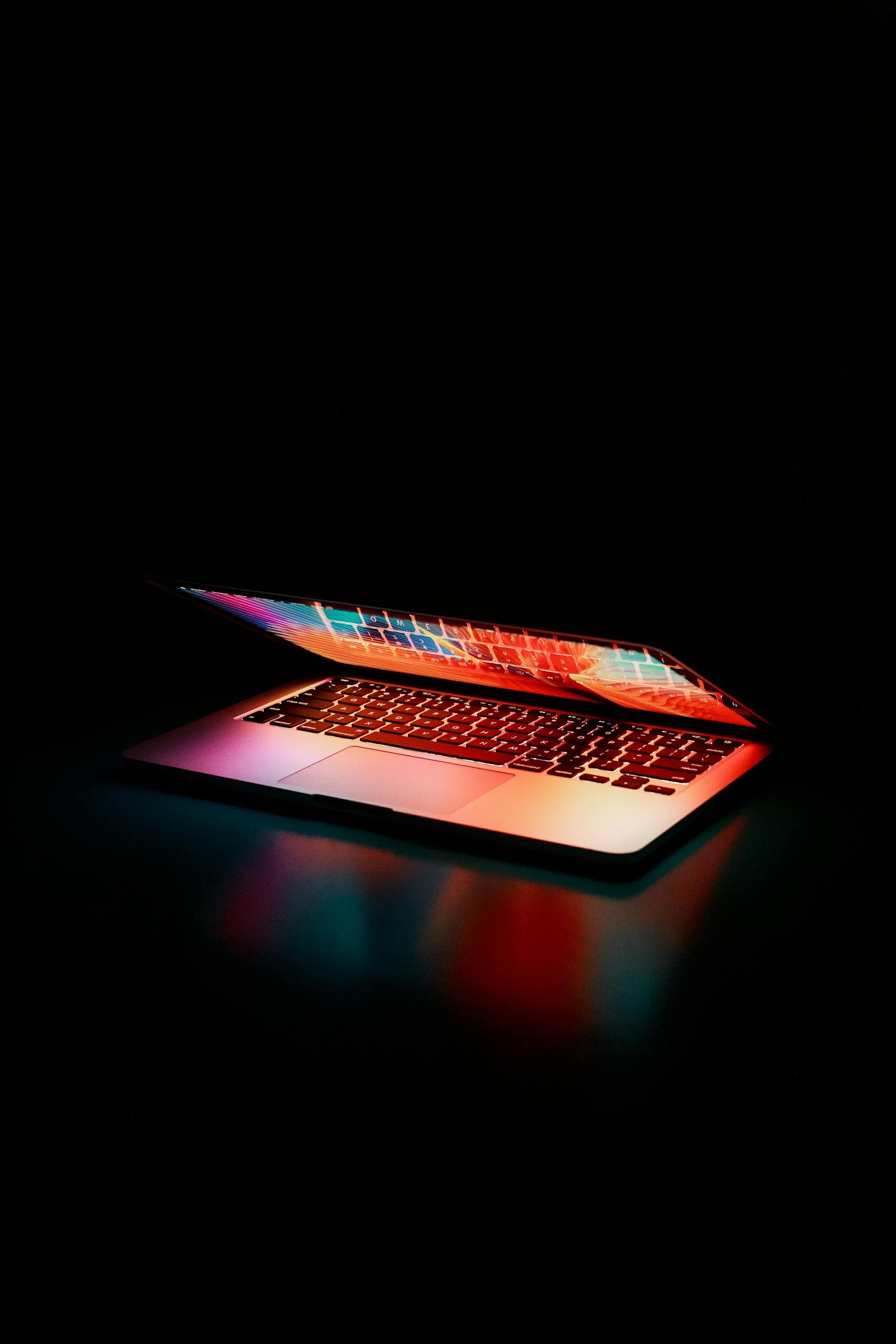The Ultimate Guide to Mac Računala: Mastering Apple’s Ecosystem in 2025
Introduction: Why Mac Računala Are Revolutionizing Computing
In the ever-evolving world of technology, few names evoke as much innovation and loyalty as Apple. “Mac računala” – the Croatian term for Mac computers – represents a lineage of devices that blend cutting-edge hardware, seamless software integration, and a user-centric design philosophy. Whether you’re a creative professional, a student, or a business executive, Mac računala have become synonymous with reliability, performance, and elegance. As we dive into 2025, Apple’s Mac lineup continues to push boundaries with AI enhancements, sustainable materials, and unprecedented processing power.
This ultimate guide aims to be your comprehensive resource on Mac računala. We’ll explore their history, current models, software ecosystem, tips for optimization, comparisons with competitors, and future trends. By the end, you’ll have the knowledge to decide if a Mac is right for you, how to get the most out of it, and why it might just be the best investment in your digital life. Buckle up – this is a deep dive clocking in at around
Also read more :epic-asia-cup-2025-unlock-thrilling-matches/
Section 1: The History of Mac Računala – From Humble Beginnings to Global Dominance
The story of Mac računala begins in 1984 with the launch of the original Macintosh. Designed by Steve Jobs and his team, it was revolutionary for its graphical user interface (GUI), mouse, and “1984” Super Bowl ad that positioned it as a liberator from conformist computing. Unlike the command-line interfaces of IBM PCs, the Mac made computing accessible to the masses.
Through the 1990s, Apple faced challenges. The Power Macintosh series introduced PowerPC processors in partnership with IBM and Motorola, boosting performance for graphics and multimedia. However, internal strife and competition from Windows led to near-bankruptcy. Jobs’ return in 1997 marked a turnaround with the iMac – a colorful, all-in-one machine that simplified setup and appealed to consumers.
The 2000s saw the transition to Intel processors in 2006, enabling Macs to run Windows via Boot Camp and broadening appeal. This era birthed icons like the MacBook Pro, favored by professionals for its portability and power. OS X (now macOS) evolved, incorporating features like Spotlight search and Time Machine backups.
The real game-changer came in 2020 with Apple’s shift to custom silicon: the M1 chip. Ditching Intel, Apple designed its own ARM-based processors, integrating CPU, GPU, and neural engines on a single die. This “Apple Silicon” era exploded efficiency – longer battery life, cooler operation, and blistering speeds. By 2023, the M2 and M3 series refined this, with the M3 Max rivaling high-end desktops in laptops.
Fast-forward to 2025: The M4 chip, announced in mid-2024, dominates. It features advanced 3nm process technology, enhanced AI capabilities via a beefed-up Neural Engine (now handling 38 trillion operations per second), and ray-tracing GPUs for pro-level gaming and rendering. Sustainability is key – Apple uses 100% recycled rare earth elements and carbon-neutral manufacturing.
Mac računala’s cultural impact can’t be overstated. They’ve powered Hollywood films (Final Cut Pro), music production (Logic Pro), and even scientific research. In Croatia and globally, Macs are staples in education and creative industries. According to Statista, Apple’s market share in premium computing hovers at 15-20%, but in creative fields, it’s over 50%.
Key milestones:
- 1984: Original Macintosh
- 1998: iMac G3
- 2006: Intel transition
- 2008: MacBook Air (thinnest laptop)
- 2020: M1 chip
- 2024: M4 with AI focus
- 2025: Integration with Apple Intelligence for proactive computing
This history underscores Apple’s philosophy: Think Different. Mac računala aren’t just machines; they’re tools for innovation.
Section 2: Current Mac Računala Models – A Breakdown for Every User

In 2025, Apple’s Mac lineup is streamlined yet diverse, catering to budgets from entry-level to pro. All run on Apple Silicon, ensuring compatibility and efficiency. Let’s dissect each.
- MacBook Air: The everyday hero. Starting at around $999, it’s ultra-portable (under 3 pounds) with a 13.6-inch or 15.3-inch Liquid Retina display. Powered by M3 or M4 chips, it offers up to 18 hours of battery life. Ideal for students and light professionals. Features include a 1080p webcam, MagSafe charging, and spatial audio. In 2025 updates, it gains Apple Intelligence for smarter Siri and on-device AI editing in Photos.
- MacBook Pro: For power users. Available in 14-inch and 16-inch sizes, with M4, M4 Pro, or M4 Max chips. Prices start at $1,599. The Pro boasts mini-LED displays with 1,000 nits brightness, ProMotion (120Hz refresh), and up to 128GB unified memory. It’s a beast for video editing, 3D modeling, and coding. 2025 enhancements include hardware-accelerated ray tracing and better thermal management for sustained performance.
- iMac: All-in-one elegance. The 24-inch model with M3 or M4 starts at $1,299. Its 4.5K Retina display is stunning for content creation, and the built-in speakers rival standalone systems. Perfect for home offices or families. New in 2025: Center Stage camera for dynamic framing in video calls.
- Mac Mini: Compact powerhouse. At $599 base, it’s Apple’s most affordable desktop. M4-equipped, it supports up to three 6K displays. Great for servers, home theaters, or as a budget pro machine. 2025 version adds more ports, including Thunderbolt 5.
- Mac Studio: Creative workstation. Starting at $1,999 with M4 Max or Ultra, it’s for intensive tasks like 8K video or machine learning. Compact yet expandable, with front ports for convenience.
- Mac Pro: The ultimate. Rack-mountable, with modular design and up to M4 Ultra (or fused variants). Prices from $6,999. Supports massive storage, multiple GPUs, and Afterburner cards for pro workflows.
All models run macOS Sequoia (2025’s version), with features like iPhone Mirroring, enhanced Continuity, and built-in antivirus. Storage options range from 256GB SSD to 8TB, and RAM from 8GB to 192GB unified.
For Croatian users, Apple offers localized keyboards and support through authorized resellers like iStyle. Pricing in euros might add 20-30% due to taxes, but EU warranties apply.
Pros of current lineup:
- Exceptional battery life (up to 22 hours on Pro models)
- Silent operation (fanless on Air)
- Seamless iOS integration (e.g., Universal Control)
Cons:
- Non-upgradable RAM/Storage post-purchase
- Higher cost vs. Windows equivalents
- Limited gaming library (though improving with MetalFX)
When choosing, consider your needs: Portability? Go Air. Power? Pro. Desktop? iMac or Mini.
Section 3: The macOS Ecosystem – Software That Makes Mac Računala Shine
macOS is the soul of Mac računala. In 2025, macOS 16 (codenamed “Clarity”) emphasizes AI and privacy. Key features:
- Apple Intelligence: On-device AI for writing assistance, image generation, and smart summaries. Siri 2.0 understands context across apps.
- Productivity Suite: Pages, Numbers, Keynote – free alternatives to Microsoft Office, with real-time collaboration.
- Creative Tools: Final Cut Pro ($299) for video, Logic Pro ($199) for music, Motion for effects. All optimized for Apple Silicon.
- Security: Gatekeeper, XProtect, and FileVault ensure data safety. macOS resists malware better than Windows.
- Continuity Features: Handoff (switch devices seamlessly), AirDrop, Sidecar (use iPad as second screen).
Third-party apps thrive: Adobe Creative Cloud runs natively, Microsoft 365 integrates perfectly, and browsers like Chrome support extensions.
For developers, Xcode offers SwiftUI for app building, and Terminal accesses Unix roots. Virtualization tools like Parallels run Windows/Linux VMs efficiently.
In education, Macs excel with apps like GarageBand for music lessons or iMovie for projects. Croatian schools increasingly adopt them for STEM.
Tips for new users:
- Customize Dock and Menu Bar.
- Use Spotlight (Cmd+Space) for quick searches.
- Enable Dark Mode for eye comfort.
macOS updates are free and annual, with five years of support per model.
Section 4: Optimization Tips and Best Practices for Mac Računala
To maximize your Mac:
- Storage Management: Use Optimize Storage to offload files to iCloud. Clean with Disk Utility.
- Battery Health: Enable Low Power Mode; avoid extreme temperatures.
- Performance Tweaks: Close unused apps; use Activity Monitor to kill resource hogs.
- Security Best Practices: Enable two-factor authentication; use strong passwords via Keychain.
- Customization: Widgets, Stacks on Desktop, and Shortcuts app for automation.
- Backup Strategies: Time Machine to external drive; iCloud for cloud sync.
- Troubleshooting: Safe Mode (Shift at boot), Reset SMC/PRAM.
For pros: Use external GPUs via Thunderbolt, or daisy-chain displays.
Common myths debunked: Macs don’t get viruses (rare, but possible); they’re not just for creatives (great for business too).
Section 5: Comparisons – Mac Računala vs. Windows PCs and Other Alternatives
Vs. Windows: Macs offer better build quality and ecosystem, but Windows has more hardware options and gaming. Benchmarks show M4 beating Intel i9 in multi-core tasks, with half the power draw.
Vs. Linux: Macs provide polished UI; Linux is free but requires tinkering.
Vs. Chromebooks: Macs are premium; Chromebooks cheap for web tasks.
In 2025, with AI wars, Apple’s on-device processing edges out cloud-dependent rivals.
Section 6: Case Studies and Real-World Applications
Creative Industry: Pixar uses Macs for animation.
- Business: Croatian firms like Infobip leverage Macs for dev ops.
- Education: Universities teach coding on Macs.
Section 7: Future Trends and What’s Next for Mac Računala
Look for M5 chips in 2026, foldable Macs, and deeper AR integration. Sustainability will drive recycled designs.
Conclusion: Is a Mac Računala Right for You?
Mac računala embody innovation. With their blend of power and simplicity, they’re worth the investment. Explore Apple’s site or stores to test one.
Frequently Asked Questions (FAQs) About Mac Računala
Based on the context of our previous discussion on Mac računala (Apple’s Mac computers), I’ve compiled a comprehensive list of frequently asked questions. This covers common queries from beginners to advanced users, drawing from Apple’s ecosystem in 2025. If this isn’t what you meant by “Fqs” (assuming it’s a shorthand for FAQs), feel free to clarify!
1. What does “Mac računala” mean?
“Mac računala” is the Croatian term for Mac computers, referring to Apple’s lineup of desktops, laptops, and workstations. It encompasses devices like the MacBook Air, MacBook Pro, iMac, Mac Mini, Mac Studio, and Mac Pro. These are known for their integration with macOS, high performance, and premium build quality.
2. What’s the difference between Mac računala and Windows PCs?
Mac računala run on macOS, which offers a more seamless ecosystem with other Apple devices (like iPhone and iPad) through features like Continuity and Handoff. They use custom Apple Silicon chips (e.g., M4 series) for superior efficiency, battery life, and security. Windows PCs are more customizable with hardware options, better for gaming, and often cheaper, but they may require more maintenance against malware. In benchmarks, Macs excel in creative tasks like video editing, while Windows dominates in raw compatibility.
3. Are Mac računala worth the price?
Yes, for many users. They hold value well (resale prices are high), receive free OS updates for years, and have exceptional build quality. In 2025, with Apple Intelligence AI features, they’re ideal for productivity and creativity. However, if you’re on a tight budget or need specific software only available on Windows, alternatives might be better. Entry-level models like the Mac Mini start around €600 in Europe, offering great value.
4. Can I run Windows on a Mac računala?
Absolutely. Using Boot Camp (for Intel-based older Macs) or virtualization software like Parallels Desktop or VMware Fusion on Apple Silicon Macs, you can run Windows apps natively or in a VM. Apple Silicon makes this efficient, but some apps (like certain games) may need compatibility layers like CrossOver. Note: ARM-based Windows is required for full optimization on M-series chips.
5. How long do Mac računala last?
Typically 5-8 years with proper care, thanks to durable hardware and software support. Apple provides macOS updates for about 7 years per model, plus security patches beyond that. For example, a 2020 M1 Mac still gets updates in 2025. Factors like battery health (replaceable on newer models) and usage affect longevity.
6. What’s Apple Silicon, and why is it better?
Apple Silicon refers to custom chips like M1, M2, M3, and now M4 (launched in 2024). These integrate CPU, GPU, Neural Engine, and memory on one chip, leading to:
- Up to 22 hours of battery life.
- Fanless designs for silence.
- Faster AI processing (e.g., 38 trillion operations/sec on M4). Compared to Intel, it’s more energy-efficient and performant for tasks like 8K video rendering or machine learning.
7. Can I upgrade RAM or storage on Mac računala?
No, on most modern models—it’s soldered for compactness and efficiency. Choose specs at purchase (e.g., up to 192GB RAM on Mac Pro). External solutions like Thunderbolt SSDs or cloud storage (iCloud) help. Older Intel Macs allowed some upgrades, but Apple Silicon prioritizes unified memory for speed.
8. Are Mac računala good for gaming?
Improving, but not the best. Apple’s Metal API and ray-tracing on M4 chips support titles like No Man’s Sky or Resident Evil via the Mac App Store or Steam. However, the library is smaller than Windows, and high-end gaming favors PCs with dedicated GPUs. In 2025, Apple Arcade and cross-platform ports are expanding options.
9. How do I transfer data from an old computer to a new Mac računala?
Use Migration Assistant during setup—it transfers files, apps, and settings wirelessly, via cable, or from a Time Machine backup. For non-Mac devices, use iCloud, external drives, or apps like Move to iOS. It’s straightforward and preserves your setup.
10. What security features do Mac računala have?
Built-in protections include:
- Gatekeeper: Verifies app sources.
- XProtect: Scans for malware.
- FileVault: Encrypts your drive.
- Touch ID/Face ID: Biometric login.
- Apple Intelligence: Privacy-focused AI processing on-device. Macs are less targeted by viruses than Windows, but always use strong passwords and avoid suspicious downloads.
11. Can I use Mac računala for programming or development?
Yes, excellently. Xcode is free for iOS/macOS app development, with Swift as Apple’s language. It supports Python, Java, web dev (via VS Code), and more. Terminal gives Unix-like access, and tools like Homebrew add packages. In 2025, AI-assisted coding in Xcode makes it even better for devs.
12. What’s the best Mac računala for students?
The MacBook Air (M3/M4) is ideal—lightweight, long battery life, and starts at €999. It handles note-taking, research, and light editing. For more power (e.g., engineering students), go MacBook Pro. Education discounts via Apple’s store can save 10-15%.
13. How does Apple handle sustainability in Mac računala?
Apple uses 100% recycled aluminum, rare earth elements, and tin in many models. Manufacturing is carbon-neutral, and packaging is plastic-free. In 2025, trade-in programs recycle old devices, and features like Low Power Mode extend battery life to reduce e-waste.
14. What if my Mac računala breaks?
AppleCare+ extends warranty to 3 years with accidental damage coverage (costs €99-€299). Genius Bar at Apple Stores or authorized service providers (like iStyle in Croatia) handle repairs. Self-service parts are available for some models. Always back up via Time Machine.
15. Future of Mac računala – What’s next?
In 2025, expect M5 chips with even more AI integration, potential foldable designs, and deeper AR/VR support via Vision Pro compatibility. Apple focuses on privacy, sustainability, and ecosystem expansion.
If you have a specific FAQ or topic in mind, let me know for more details







One Comment